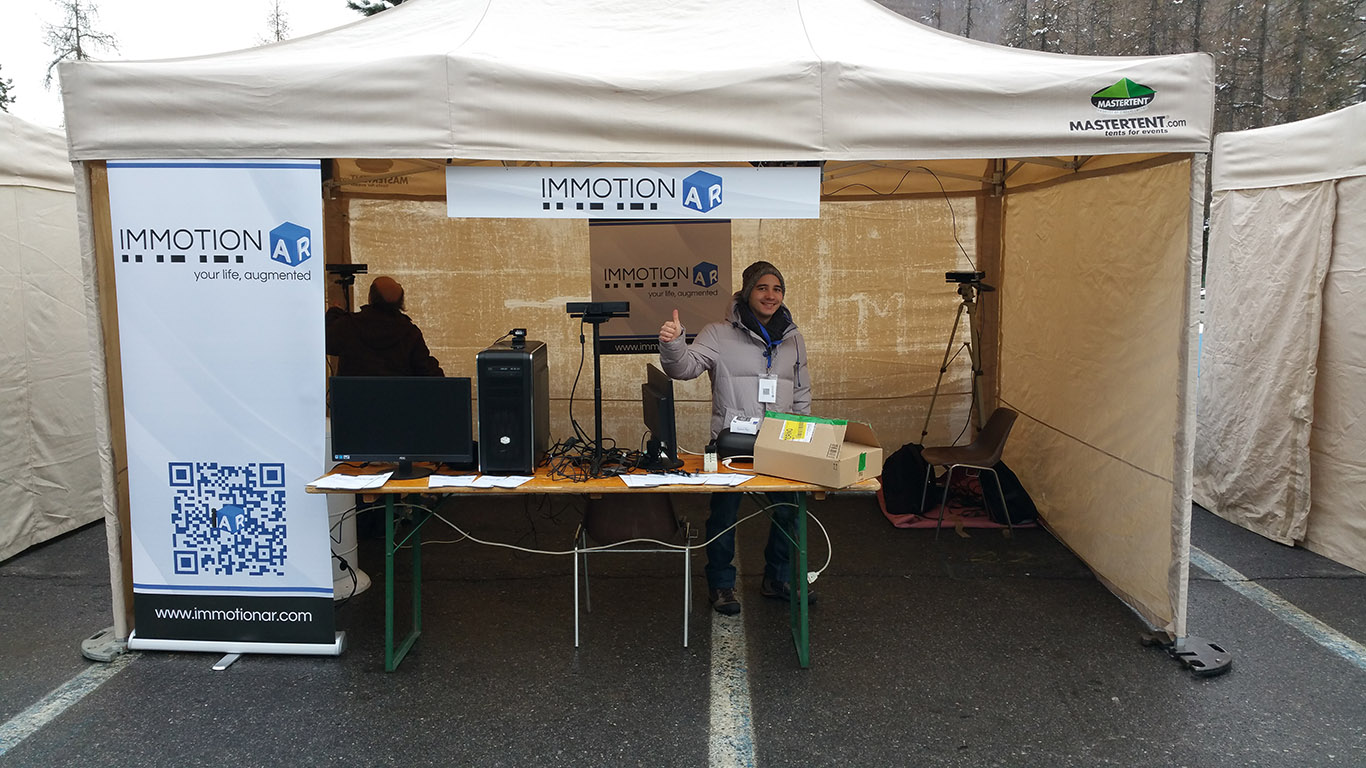
Hello everyone! How are going your holidays?
We have not had so much time for relaxing, because we decided to participate to the Wonder Light Night exhibition in Bardonecchia, Italy… so we had to work during the holidays to prepare for the event: we fixed some bugs and make improvements to our demo, prepared all the documents to handle the customers queue and organized all the stuff to be ready for the demo day.
This was our second exhibition, so we were prepared to handle a similar event: if you remember, we had the first exhibition more than one month ago: it was the Wearable Tech Torino and there we learned a lot of things, as I explained in the relative post-mortem.
I like to write post-mortems using a Q&A structure, as in a fake interview, so I’ll make this article in the same way. Hope you’ll like it :-). Ready? GO!
Ok, so this was your second exhibition… what have you improved in this demo since the last one?
Actually, a lot of small things and some important major ones. The most remarkable improvements were:
- Initialization sequence: it has been made more readable, good-looking, and also usable by color blind people. Besides that, the system has been made capable of informing the user about which sensors are tracking it and which ones do not, helping us in supporting the user during this stage of the demo.
- Object interactions: interactions with objects were absent in the WTT demo. In this one, there were 3 active objects in the scene:
- a switch that when activated by user hands, made the fire color change to purple
- a crazy rugby ball that could be played using feet and hands
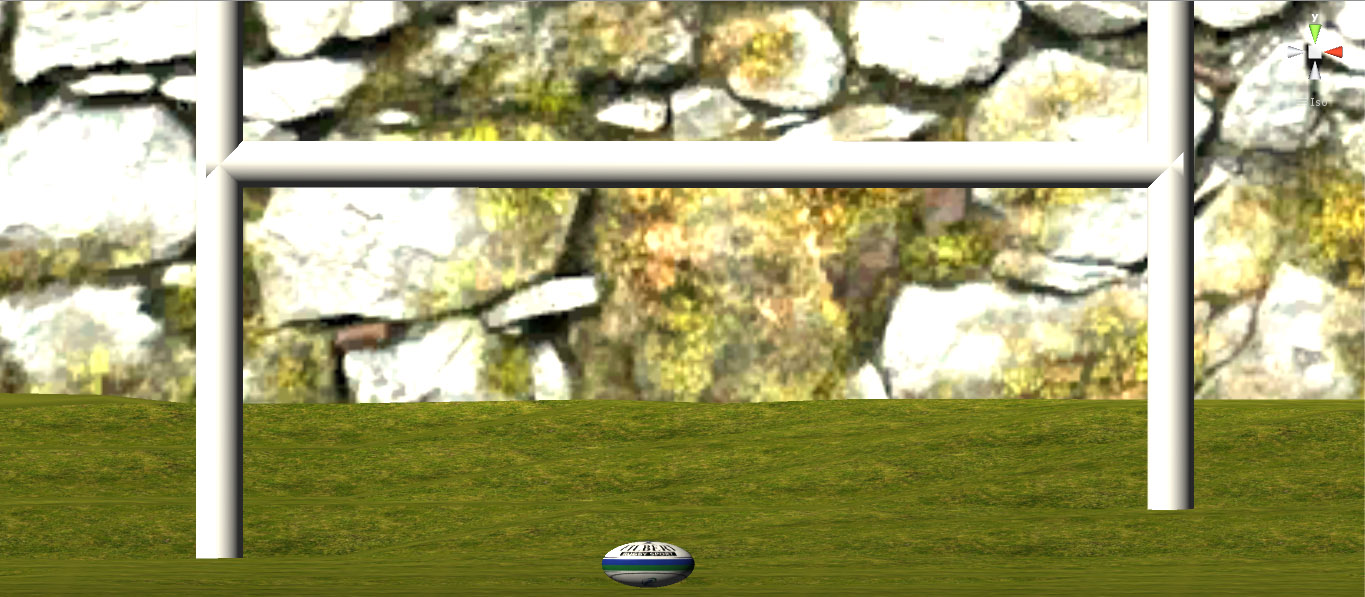
- a punchball that could be punched with naked hands
- Wireless setup: there was a working demo even for Samsung Gear VR: quality was inferior to the PC one, but it was playable and working. We kept it as a backup in case of Oculus Rift malfunctioning.
- No multiple people in scene bug: this was a nasty bug that popped up during the WTT exhibition, and we solved it, so now the demo was more stable.
I remember you had a lot of queue and time management problem during the WTT. Have you made any improvements to solve them?
Yes, we planned queue time management: every disclaimer people had to sign to try the demo had an ID number pre-printed on it, with an estimated demo access time, so people could just register for the demo and have a precise time at which coming back and try the demo, without staying in a long queue. Then we prepared an interactive spreadsheet to compute the estimated time for each user, completely updatable at runtime.
Last but not least, we added temporization to the demo: the application had a predefined time written in a file to specify how much time the user could play inside the virtual world. The demo displayed alert messages at certain intervals to specify the remaining time and after two minutes made all the screen black to signal the end of the demo. This was a great idea to have precise timing for each user trying our system.
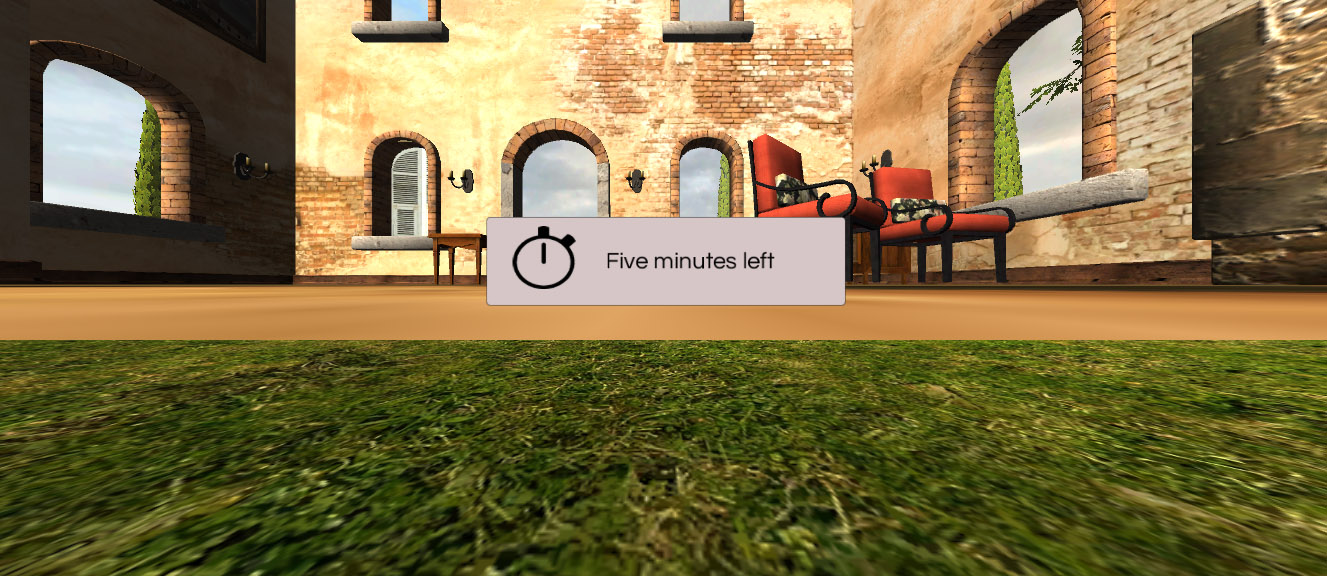
Great! There was something you were worried about?
Of course. In particular, this exhibition setup was completely different from the last one: it was an outdoor event, with non-technical people attending it, not in our city and with no days before the event to try our booth and solve logistics problems.
And then… our Oculus Rift DK2 is an old device that has been used a lot and it starts showing a lot of malfunctioning: we hoped it wouldn’t break completely during the event...
The 4th of January was the great exhibition day. How was your preparation of the booth?
Well, not that good. Due to bad weather during the night, event organizers were late in the booth setup process. So we had to wait 40-50 minutes before beginning our booth preparation. After that time, we could begin putting devices in their position, but there was still no electrical power. And the booth had some unexpected problems:
- It had no floor: its floor was the plaza asphalt, that was wet, so we could not put our precious small PCs directly on it; we solved using some pieces of fitted carpet to save them from the wet asphalt. Wet floor meant also the inability to put the cables on the floor, so we had to make them fly near the booth ceiling.
- It was really cold (we were on the mountains!): this made us more uncomfortable during the operations and, besides that, the use of the Oculus Rift with those temperatures made the lenses tarnish themselves. Things got better when a great heater was put by the organizer inside the booth.
- There was not enough place to put all our stuff: during the WTT our stand had a desk with private places where to put our pens, brochures, backpacks. Now we had only a simple table, so we had to invent new ways to store things, using chairs and boxes.
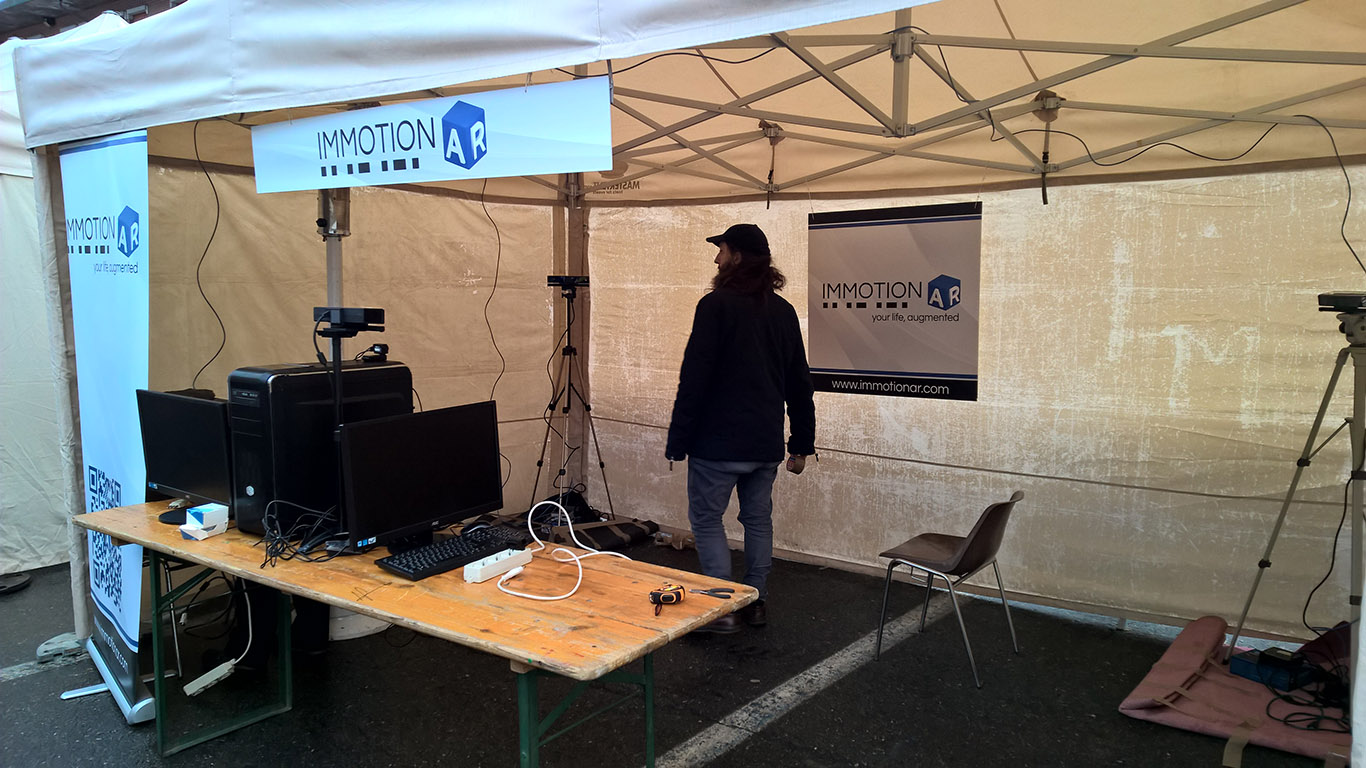
- The location was awful for Kinect usage: there were a lot of interferences by lights, infrared sources (the heater itself), materials and other things: Kinect tracking was highly unstable and this led to poor skeletal tracking of the system.
- We were in a public plaza, so sometimes some people showed up looking us as we were doing some strange things (indeed, we do strange things :-) ). Some old people asked us what was going on and we tried explaining them what virtual reality was, but, judging by their faces, we failed miserably :-)
- Time was limited: we had to complete all the preparation by 5:30PM. We finished just in time for the deadline.
Conditions were critical, but we made it: tracking was not perfect, but it worked. The system was up and running by 5:30PM.
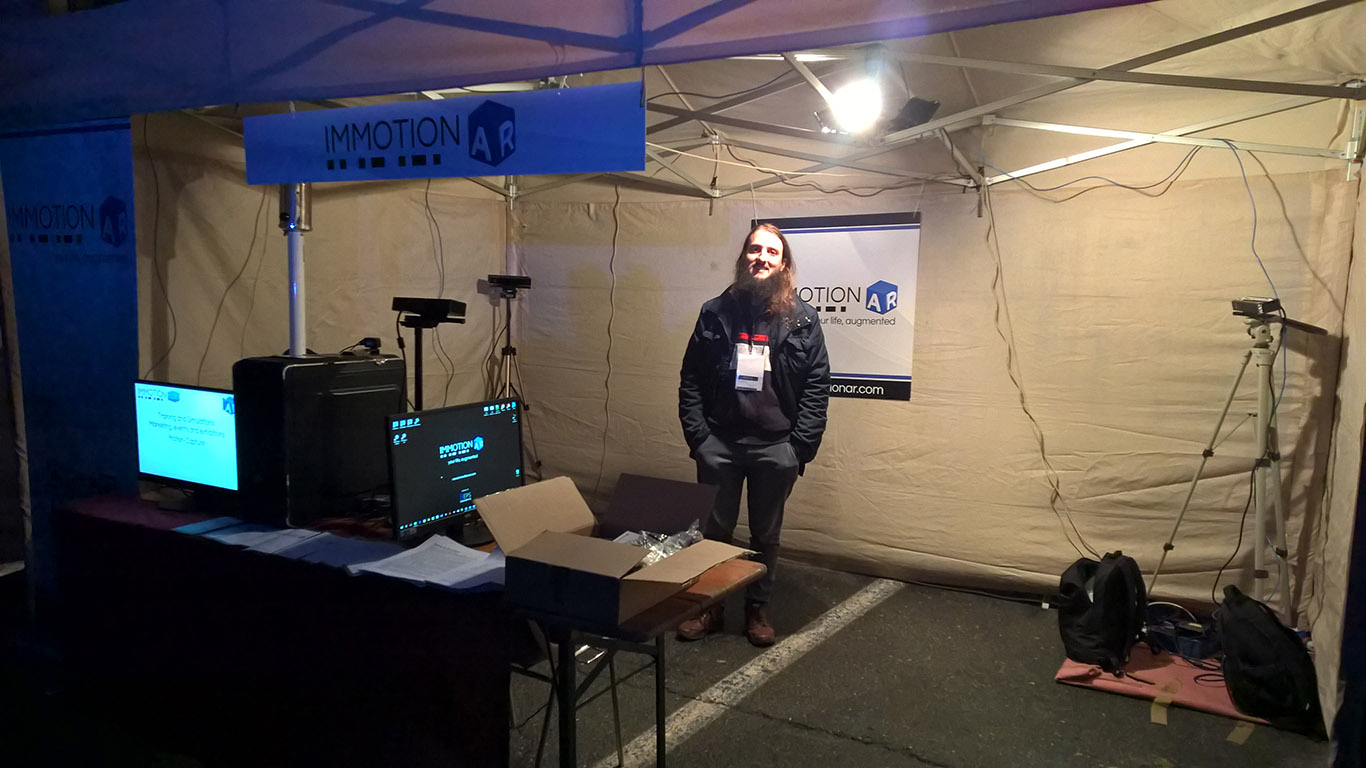
And we must thank a lot the organizers: Davide Giordano from Jetop and Roberto Rosati of Lucas were always helpful for every problem we showed them.
The lesson here is the same of WTT: be prepared that something will not be as expected and that you have to find workarounds to make everything work.
At 5:30PM the show begun. Was it like WTT?
No, it was very different. It was an outdoor event, so at first it was cold :-)
Then there were few people: Bardonecchia is a touristic place where people go skiing: this winter too few snow has fallen from the sky, so few people went to Bardonecchia to ski and so few people were at this event. This has meant to us a very short waiting queue and a lot of spare time to have dinner. Also, all the strategy with the super-interactive spreadsheet was absolutely useless (but designing it made happy my engineer heart anyway :-)).
Most of people were not technician: they were usually high school guys or families with little kids. In particular, a lot of children under 13 years old really wanted to try our solution, but we discouraged it because of Oculus guidelines (and some of them got really sad). Approaching this kind of people was very different: some were “scared” by our stand and looked at it for long without trying it. We had to use the system by ourselves to make people around us understand what the system was useful for, because a lot of people didn’t even know what virtual reality was.
What did go wrong?
Well, the fact that there was so few people was not good for us. But it was also some kind of advantage, because our Oculus Rift DK2 went really crazy, and we had to turn it off and on a lot of times during the exhibition: this frustrated our users and made us lose a lot of time. We wouldn't be able to handle a long queue of people, because of this inconvenient.
High volume music played by the deejay ReacTJ (that I personally think is very cool) made hard for us to speak to people while they were trying our solution. It is a problem we should solve in the future.
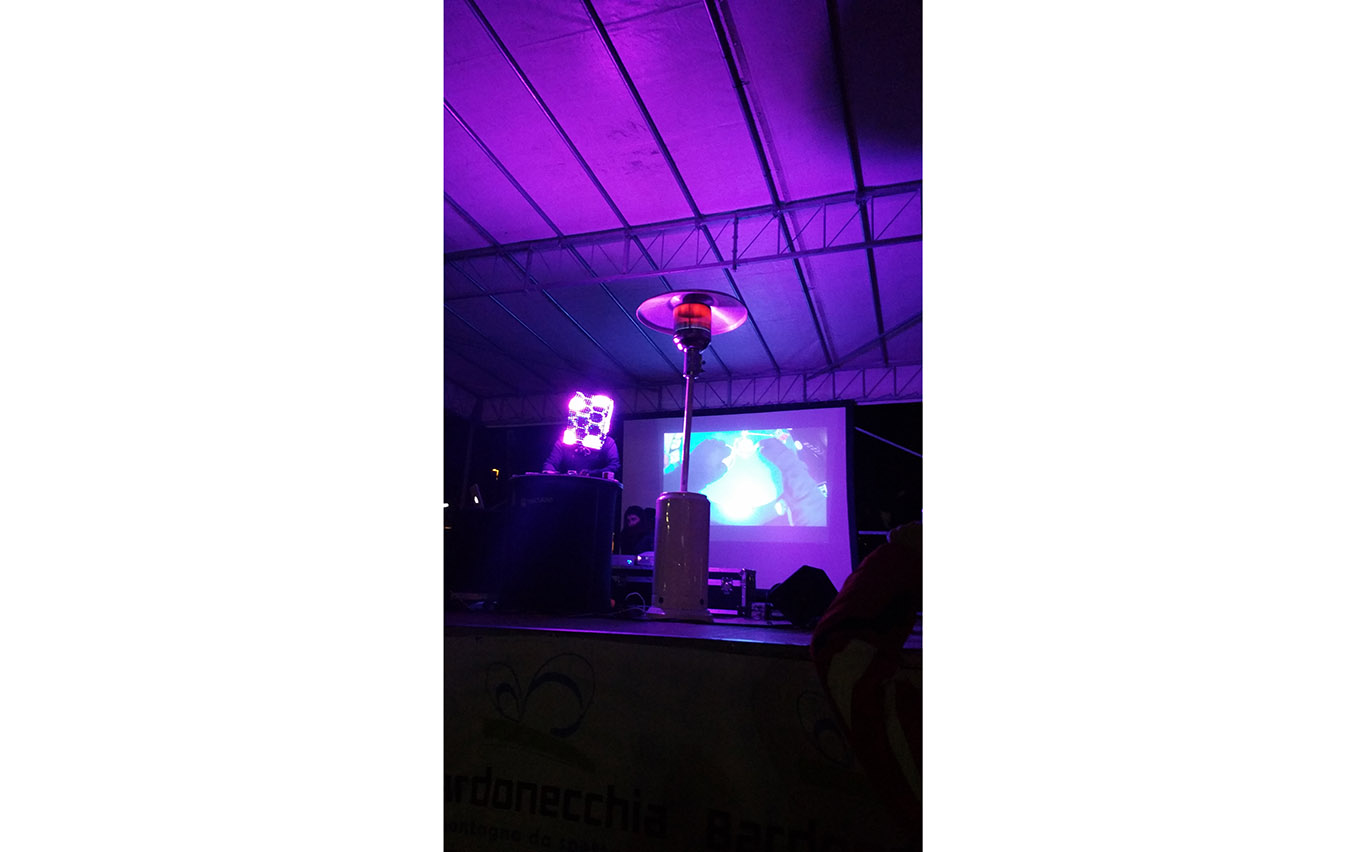
And obviously a new crazy bug showed up during the day! It is some kind of curse for us: a new annoying bug for every exhibition :-)
What did go well?
Most of the people that tried our system, liked it a lot! Seeing the excited look of the people after having tried ImmotionRoom was priceless. Interaction system was really appreciated: people loved to kick the crazy rugby ball, and almost forgot about all the rest of the demo! This taught us that we have to keep following this path and make all the next demos always more interactive. Temporization of the demo worked really well and people were able to know how much time they could spend inside the virtual world. We are now sure that the system can be used by anyone and that it is very funny for people to try it.
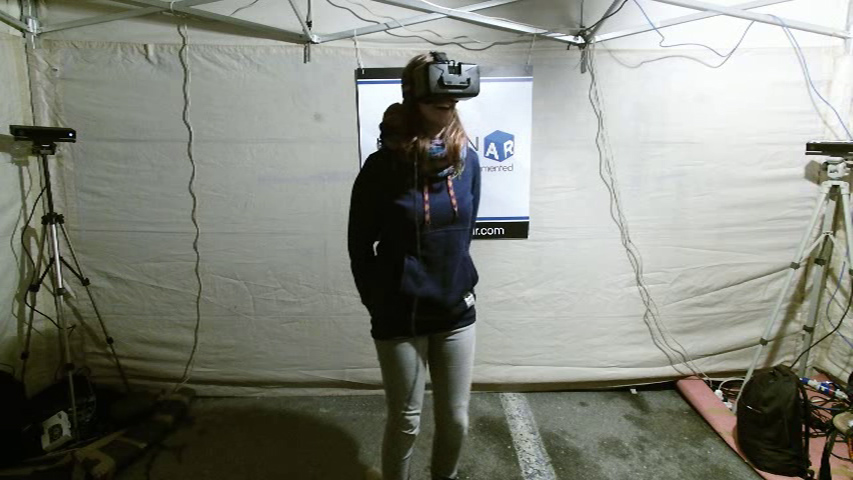
And we have known some business people with whom we could start a collaboration in the future. This is a very important part of each exhibition.
Something funny to add?
A guy who plays football tried to kick the virtual rugby ball so hard, that he kicked a chair in the real world and almost destroyed our booth!
What have you learned in this event?
I learned that each event is a different story and that it has its peculiar problems. And whatever happens, you have to keep your blood cold and try to serve people and give them the best possible experience. Shit happens and you have to deal with it.
Besides that, I’ve learned that people like an interactive virtual reality 1000 times more than an explorative virtual reality.
Any last words?
I really want to thank again all the organizers for having given us this opportunity and for having helped us during all the event. I hope we will collaborate again in the future. And I want to thank also my adventure-mates Beppe and Gianni for their great work.
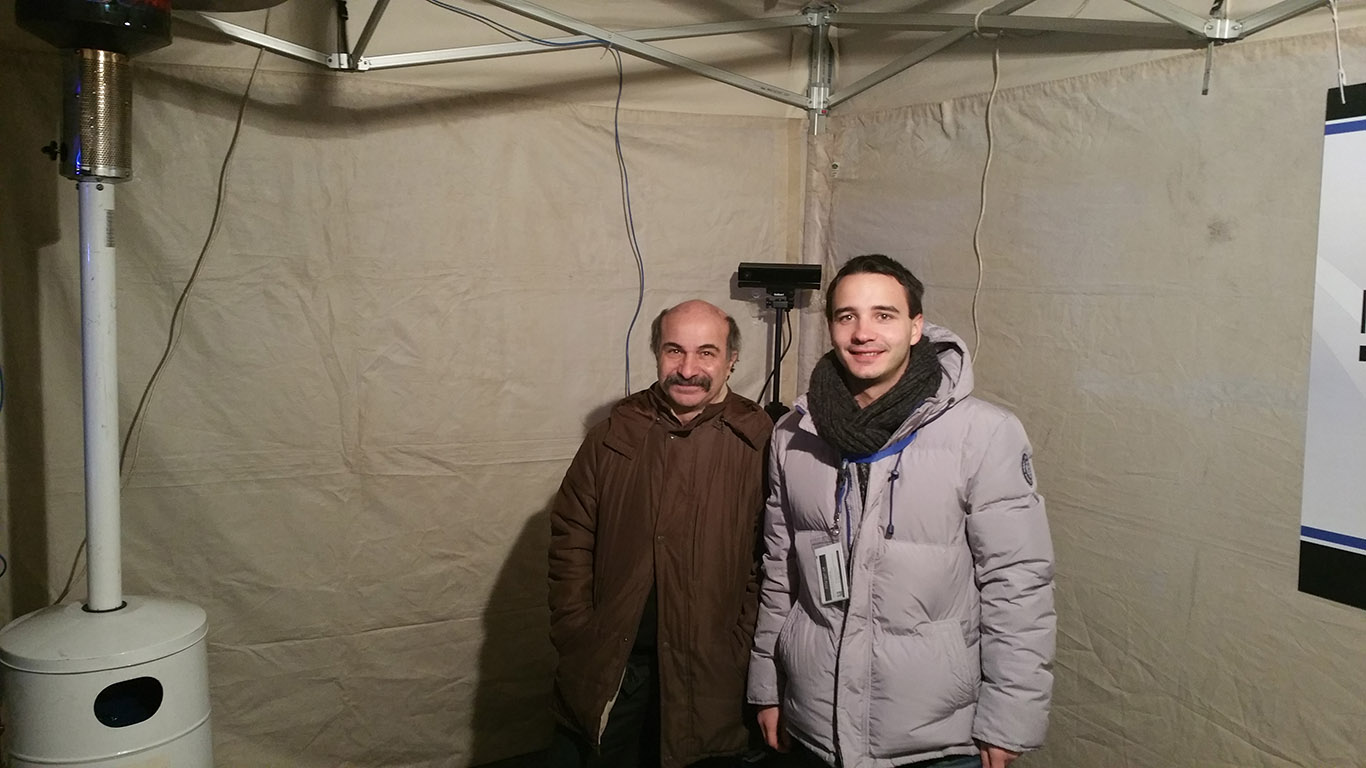
After this event I’m more convinced than ever that we are in the right path to make something that can make people excited and I’m very happy of it!
And… I wonder what nasty bug will show up at the next event… :-)